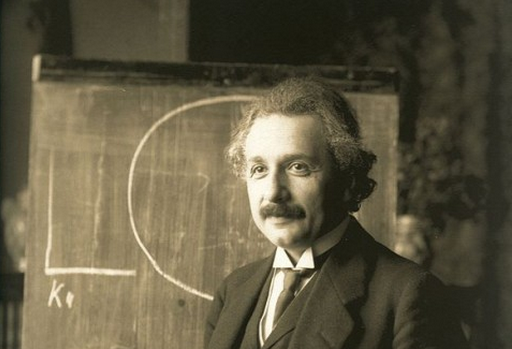Here is a rare recording of Albert Einstein reading his speech on the immediate aftermath of World War II, “The War is Won, But the Peace is Not”:
The speech was delivered on December 10, 1945, at the Fifth Nobel Anniversary Dinner at the Hotel Astor in New York. Only four months earlier, the United States had dropped atomic bombs on civilian populations in the Japanese cities of Hiroshima and Nagasaki. Einstein didn’t work on the atomic bomb, but in 1939 he had signed a letter to President Franklin D. Roosevelt urging him to procure uranium and accelerate nuclear research. In his speech, Einstein draws a comparison between contemporary physicists and the founder of the Nobel Prize, who invented dynamite.
Physicists find themselves in a position not unlike that of Alfred Nobel himself. Alfred Nobel invented the most powerful explosive ever known up to his time, a means of destruction par excellence. In order to atone for this, in order to relieve his human conscience, he instituted his awards for the promotion of peace and for achievements of peace. Today, the physicists who participated in forging the most formidable and dangerous weapon of all times are harassed by an equal feeling of responsibility, not to say guilt. And we cannot desist from warning, and warning again, we cannot and should not slacken in our efforts to make the nations of the world, and especially their governments, aware of the unspeakable disaster they are certain to provoke unless they change their attitude toward each other and toward the task of shaping the future.
But Einstein says he is troubled by what he sees in the months following World War II.
The war is won, but the peace is not. The great powers, united in fighting, are now divided over the peace settlements. The world was promised freedom from fear, but in fact fear has increased tremendously since the termination of the war. The world was promised freedom from want, but large parts of the world are faced with starvation while others are living in abundance. The nations were promised liberation and justice. But we have witnessed, and are witnessing even now, the sad spectacle of “liberating” armies firing into populations who want their independence and social equality, and supporting in those countries, by force of arms, such parties and personalities as appear to be most suited to serve vested interests. Territorial questions and arguments of power, obsolete though they are, still prevail over the essential demands of common welfare and justice.
Einstein then goes on to talk about a specific case: the plight of his own people, the European Jews.
While in Europe territories are being distributed without any qualms about the wishes of the people concerned, the remainders of European Jewry, one-fifth of its prewar population, are again denied access to their haven in Palestine and left to hunger and cold and persisting hostility. There is no country, even today, that would be willing or able to offer them a place where they could live in peace and security. And the fact that many of them are still kept in the degrading conditions of concentration camps by the Allies gives sufficient evidence of the shamefulness and hopelessness of the situation.
Einstein concludes by calling for “a radical change in our whole attitude, in the entire political concept.” Without doing so, he says, “human civilization will be doomed.”
Note: The full text of “The War is Won, But the Peace is Not” is available in the Einstein anthologies Out of My Later Years and Ideas and Opinions.




